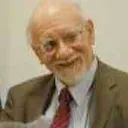Stay in the Loop
BSR publishes on a weekly schedule, with an email newsletter every Wednesday and Thursday morning. There’s no paywall, and subscribing is always free.
Channeling Hildegard
Chestnut Street Singers' 'Divinity Breathed Forth, the Eternal Hildegard'

The Chestnut Street Singers’ latest concert presented one of the most artistically uncompromising programs I’ve encountered. The concert created a contemplative mood and the Singers resolutely avoided the temptation to liven it up with a few showy numbers. One of the pieces supported the chorus with a drum, but it stayed well inside the Singers’ deliberately narrow emotional parameters. The result was a program addressing some of the deepest feelings satisfied by music.
Meet Hildegard von Bingen
The concert celebrated the life of 12th-century Catholic mystic Hildegard von Bingen, the first woman composer whose scores have survived to our own time. Placed in a convent at an early age, Hildegard became an abbess, musician, poet, and one of the leading intellectuals of her era. She is even considered the founder of German natural history.
The program included four pieces by Hildegard and ten by eight modern composers, all but one still living. Hildegard’s compositions were chants on traditional sacred texts and her own religious poems. The modern composers took their words from Hildegard’s texts, standard Christian religious texts, and passages from Sufi mystics and the Bengali poet Rabindranath Tagore.
For me, the unifying mood among all the pieces is depicted in Albert Schweitzer’s phrase “reverence for life.” The differences between the texts’ specific religious and philosophical beliefs are irrelevant. They all share a mystical sense of communion with the eternal mystery surrounding us.
Many surprises
The Chestnut Street Singers specialize in a capella chorus music, one of the most difficult forms a composer can take on. When a chorus is accompanied by instruments, a composer can maintain interest and add color by throwing in the flash of a trumpet or the warmth of strings. When a chorus sings unaccompanied, the composer must work with rhythm, the interaction between different sections, and the timbres and contrasts created by different combinations of voices. The composers on this program might bear names as unfamiliar as Ruth Byrchmore (b. 1966) or Daniel Elder (b. 1986), but their pieces created an afternoon filled with little surprises: a short, unexpected soprano solo or the timbre created by a blend of soprano and tenor voices.
The finale, Bach's Third Orchestral Suite, was a beautiful example of imaginative a cappella writing. It’s built around a mantra, “Christ within me,” repeated several times at the beginning. Different sections repeat the mantra as other sections take up a litany of phrases like “Christ before me, Christ when I lie down, Christ in the eye that sees me.” Pärt plays with different combinations of voices the way a good orchestra composer plays with a set of variations.
The Chestnut Street Singers call themselves a “cooperative chorus.” They take turns conducting and plan programs through a communal process that involves a lot of discussion and emailing. They’ve been at it for five years, and the process consistently produces unusual programs stocked with high-quality music. Their last program presented moving pieces on exile and immigration. Their next concerts, on June 4 and 5, 2017, will center on 20th-century Hungarian composer Zoltán Kodály.
What, When, Where
Divinity Breathed Forth, the Eternal Hildegard. Choral works by Hildegard of Bingen, Arvo Pärt, Judith West, Frank Ferko, Craig Hella Johnson, Ruth Byrchmore, Daniel Elder, John Tavener, Karen P. Thomas. Andy Thierauf, percussion. Chestnut Street Singers chorus. March 26, 2017, at the Old St. Joseph’s Church, 321 Willings Alley, Philadelphia. Chestnutstreetsingers.org.
Sign up for our newsletter
All of the week's new articles, all in one place. Sign up for the free weekly BSR newsletters, and don't miss a conversation.
 Tom Purdom
Tom Purdom